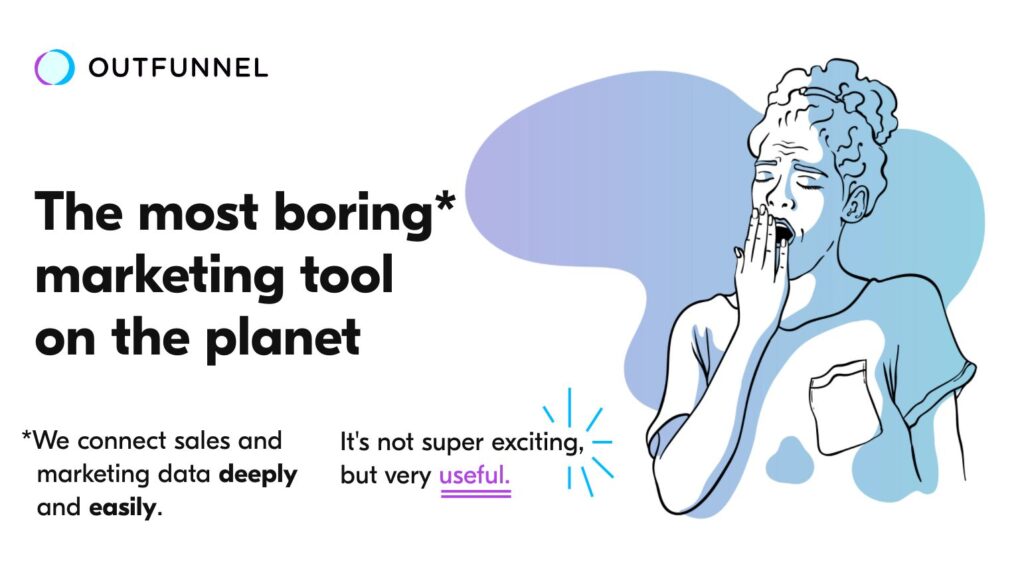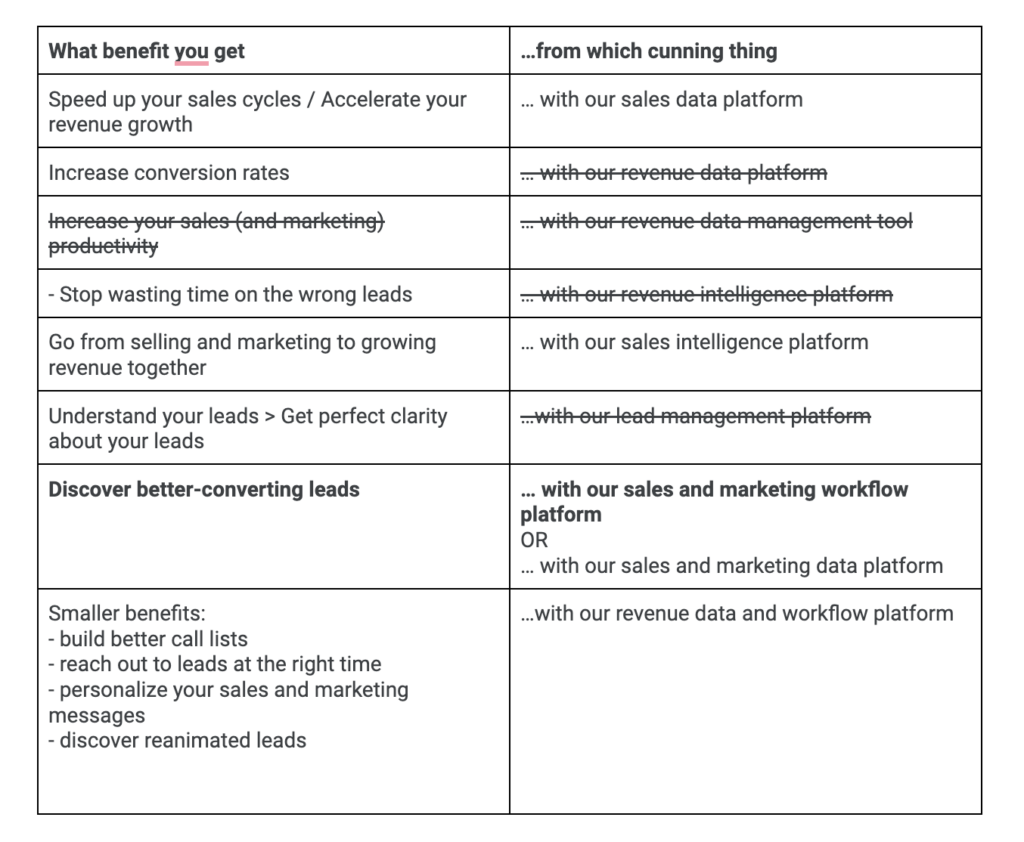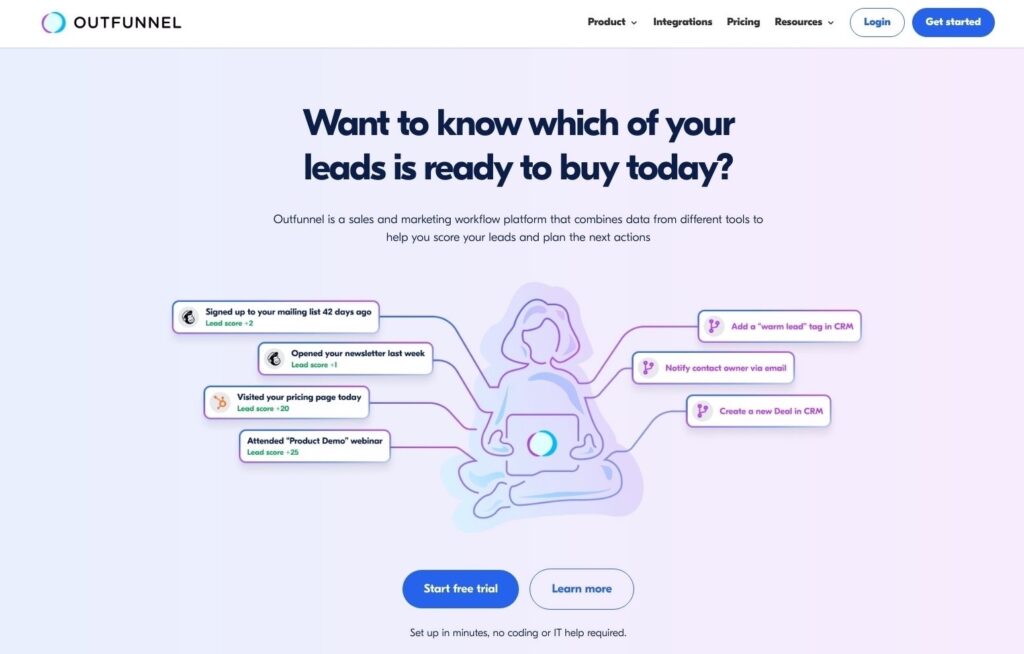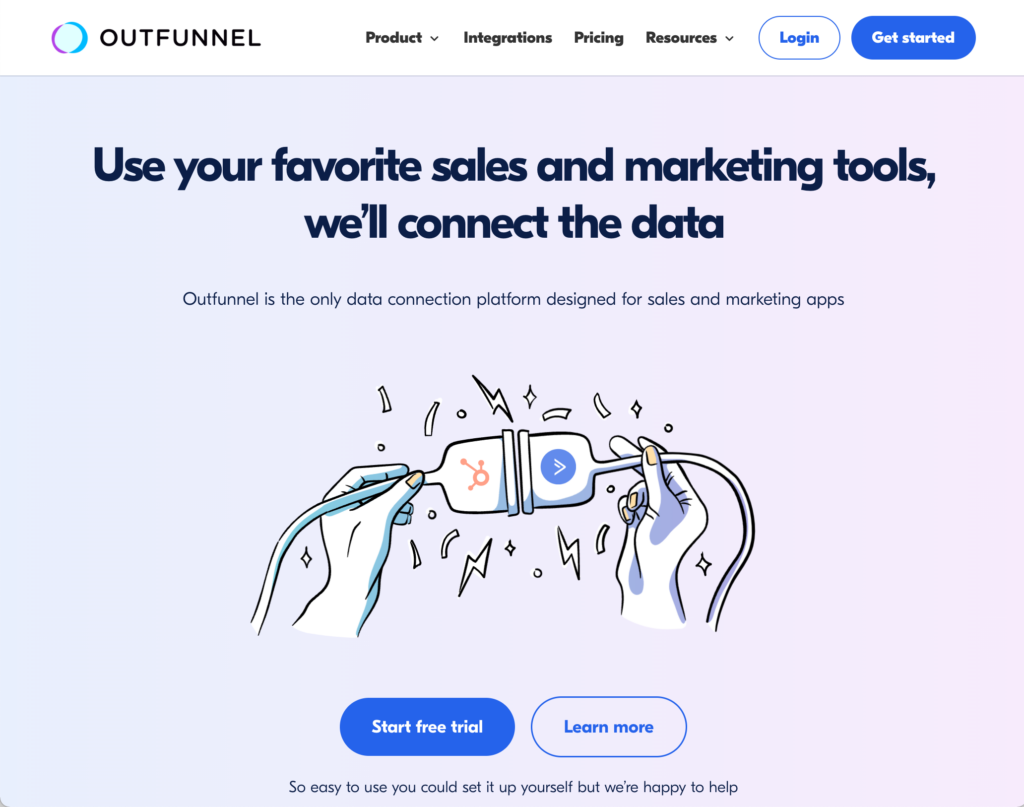Long story short: if you’re a new or lesser-known B2B company, focus your message on a very specific pain, benefit, or feature that your product can actually deliver. Avoid the “we do all these amazing things for you” type of messaging and getting overly creative.
And now, for the longer story.
Lesson 1: the time when we were too “creative”
So Outfunnel is a tool that connects sales and marketing data. How do we talk about a product like that without boring people to tears? Syncing data isn’t exactly sexy. So, we thought, what if we lean into that? What if we flip the script and embrace the “boring” nature of what we do, but in a funny way?
Enter our next messaging experiment: Outfunnel—The Most Boring Marketing Tool on the Planet.

We’d emphasize the product’s “boring” necessity, positioning it as the tool that quietly does the job while others try to wow you. We tested this direction with Wynter and got some interesting feedback:
The core proposition—connecting various data sources so that we have one source of all truth—is compelling.
The humor. More brands should take risks like this. Regardless of the product, this would be a brand I’d gladly follow on social media, just because they seem fun.
On the flip side, we also heard:
What are the benefits over other tools? Any cool, unique things people have done with it?
We also tested a more traditional “The best way to connect tools deeply and easily” concept, and this got more traditional feedback. The panelists had some questions about functionality and price but no one got excited about the offer.
So we went with the more creative and risky option.
We launched this new message, calling ourselves “boring” while playing up the product’s utility. And… the numbers didn’t change. Our conversion rates remained the same.
But, for the first time, we started getting real feedback about our messaging. Some people loved our creative risk; others were confused. The pattern? The people who loved it were fellow marketers, business acquaintances, or consultants. The people who got confused were our trial users—the ones we were actually trying to convert.
So, while the bold messaging got us noticed, it also left too many people scratching their heads. What exactly did Outfunnel do? Was it really just a funny company, or could it solve their actual problem?
The Return to Clarity
In the end, we had to admit that while standing out is great, clarity is even more important in B2B messaging. Our potential customers needed to immediately understand what our product does and how it helps them. So, with a heavy heart, we scrapped the creative messaging and returned to a more straightforward approach: Outfunnel makes it easy to deeply connect sales and marketing tools.
Yes, it’s “boring,” but it works. The message directly ties into what the product does, and it speaks to the core pain points our customers have.
Lesson 2: When Trying to Promise Too Much Didn’t Work
Back in 2022, Outfunnel was struggling with a lot of things, and one of our biggest challenges was messaging. Our product had evolved beyond simple data syncing between sales and marketing tools, but our messaging hadn’t kept up. We were still talking like a one-trick pony when in reality, we were doing a few different tricks—some solid, others a bit basic.
For example, we had lead scoring and web visitor tracking. We also had profile pages in the app listing all the engagements for a contact. Super useful, but definitely not a Customer Data Platform (CDP). Still, we wanted to communicate all of our new capabilities without sounding too modest.
So, we hired a consultant for a messaging and positioning exercise. They asked us some great questions about our features and benefits, and what came out of that session had me practically salivating. We were sitting on some killer features that I was convinced should excite anyone who heard about them.

But how do you sum all that up in a single sentence? How do you tie together features like syncing, lead scoring, workflows, and web tracking without overpromising or confusing people?
One thing that Outfunnel enables is “workflows”. Can we lead with this?
We ended up with a new message centered around a few key points:
- Our main benefit was helping businesses know which leads to focus on.
- The “cunning” thing about Outfunnel was its ability to orchestrate workflows across different apps. (For example, if someone clicks an email in tool A, it updates a lead score in tool B, and triggers a follow-up task in tool C.)
- We’d position our in-app profiles as “360° customer profiles” and highlight our syncing features as “workflows.”
Next, we designed a new webpage and tested it with Wynter. The feedback was pretty good. We thought we had nailed it.

Then, we waited. And waited some more.
Cue crickets.
It turned out that our customers—small and medium-sized businesses—came to us with a very specific need: to sync data or track what leads were doing on their website. They weren’t moved by our vague promise to “prioritize leads” and “set up workflows.” And those who did need lead prioritization and workflow automation weren’t particularly impressed with how we delivered it.
We’d drifted too far from the core of what the product did. After more customer conversations, surveys, and discussions, we realized our messaging had to get back to basics. It had to clearly align with what people were already coming to us for.

The Key Takeaway
The temptation to be creative or bold in your B2B messaging is strong—and it’s true that standing out is important. But at the end of the day, the message that wins is the one that’s clear and simple.
Your customers need to know exactly how your product helps them. If they don’t, it doesn’t matter how clever or flashy your message is. Keep it simple, stick to what you do best, and leave the risky creative stuff for your social media campaigns.



